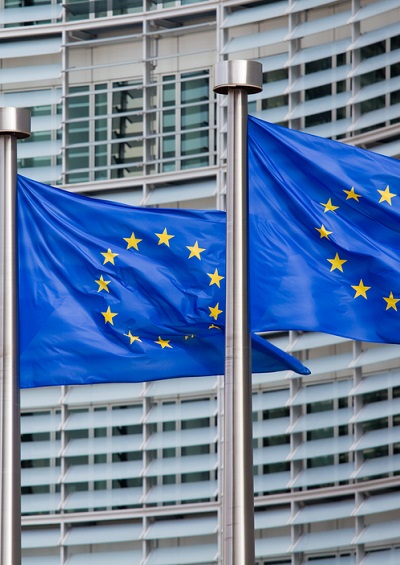ECB: Pushing Europe over the Edge
Despite all the advertising, launching QE in Europe may well be counterproductive.
January 19, 2015

For years, Anglo-Saxon economists have warned that the Eurozone might fall into a deflationary trap. Following recent inflation data for the Eurozone showing a negative year-on-year inflation rate of minus 0.2%, these calls have become ever more pressing.
Second part of this essay
In order to avoid a deflation, which would be the final nail in the coffin for Eurozone debtors, the ECB plans to follow the example of the UK and the United States in embarking on a massive program to buy up government bonds.
This quantitative easing (QE) is supposed to bring up inflation and revive the economy. The problem is: It will not work.
To understand why, let us start with one important acknowledgement: The QE programs of the United States and the UK are not necessarily the success they are marketed as. The main reasons for the relatively better performance of the U.S. economy may well be rooted in different factors:
1. The government’s willingness to run huge deficits
2. The swift recapitalization of banks
3. The more flexible labor market
4. The tailwind of cheaper energy thanks to the shale gas revolution.
True, the Fed has contributed to this by weakening the U.S. dollar and by bringing interest rates lower, which helped the heavily indebted households. The latter could also deleverage, thanks to a more generous bankruptcy law. Little wonder then that overall debt levels are lower in the United States than in Europe.
In addition, capital markets in Europe work very differently compared to those in the United States. In Europe, banks finance most companies as only the biggest firms have direct access to capital markets. Therefore, these firms also have only an indirect benefit of lower rates.
In addition, existing contracts are not adjusted to lower rates. In the United States, lower rates also tend to lead to lower rates for existing mortgages. In Europe, rates – once agreed — apply for the whole duration of the credit contract.
Given the perilous state of European banks’ balance sheets and the already high level of indebtedness of European households and corporations, one thing is for sure: Cheaper money does not necessarily lead to more credit. The ECB is pushing on a string.
All this is well known to ECB economists as well. They openly acknowledge that quantitative easing will have only a minor impact, especially given that interest rates are already at multi-century lows.
Do something! Do anything?
One could argue that trying to do something is always better than sitting by idly and do nothing. The problem with this view is that QE not only has no positive impact on inflation rate and economic growth. On the contrary: It might well lead to an intensification of the crisis.
The reason for this is threefold:
1. Low interest rates might force savers to save even more for retirement. Lower returns on your savings means you have to put more to the side than in a normal interest environment. Consumption could well trend lower, which in turn would lead to a further reduction in economic activity.
2. The low interest rates help over-indebted banks and corporations stay in business. But as was the case in Japan over the past two decades, these firms merely survive.
The banks are not in a position to extend new credit and the surviving firms fail to invest in capital stock, new products and training. This leads to a “zombification,” as the Bank for International Settlements already warned several years ago. The result is a perpetuation of the crisis.
3. Low interest rates give politicians the illusion that everything is well. They see no need to fundamentally reform and to address the true reason for our problems — the over-indebtedness of our economies.
With all that in mind, it becomes increasingly clear that QE not only has no positive effect on the economies of the Eurozone, but might well harm them. Why then is the ECB still planning to go ahead?
Why then QE?
Counterintuitive though it may sound, the goal of QE is not to revive the economy. One could argue that the ECB is forced to act, as the capital markets already expect the ECB to act. Not doing so at this juncture would lead to higher interest rates and a stronger dollar – the exact opposite of what the leaders of Europe and the ECB want to achieve.
But there is more to it. By buying up government bonds, the ECB would practically generate a joint liability for all Eurozone debt via its balance sheet.
Although Germany would contribute less debt than Italy, given the size of outstanding debt relative to GDP, German taxpayers would guarantee 28% of all Eurozone debt, given Germany’s share of the equity of the ECB.
Such a debt mutualization would be achieved without any democratic legitimization. The creditor countries would get nothing in return for their explicit support.
The advantage from the point of view of the politicians, including the German ones, is that this mutualization would be non-transparent for the broader electorate, therefore hiding the true costs for rescuing the Eurozone.
According to my estimates, between three and five trillion Euros of private and government debt in the Eurozone will not be served in an orderly way. These dimensions are clearly beyond any politician’s ability to communicate.
Over the weekend news appeared, that in order to avoid criticism around debt mutulalization through the back door, the ECB will agree, that the individual central banks buy local government bonds, i.e the Bank of Italy only Italian bonds, the Bundesbank only German government bonds. Leaving aside the fact that this would equal to a split of the Eurozone and be against all efforts of further integration one has to look deeper to get the true implications:
1. If the Banca d`Italia buys up Italian bonds, the government of Italy is guaranteeing these bonds. So a government with an unsustainable debt burden would sell bonds to its own central bank and guarantee for future losses. Obviously this can not work. It worked in the past, when Italy still had the Lira and this kind of direct government funding lead to reliable inflation. Today this is not the case.
2. Going down this path, Italy would continue building up external debt via the balance sheet of the Euro-Network of central banks. These so called Target II receivables are nothing more then a credit by other central banks, notably the Bundesbank. Economists from the Royal Bank of Scotland point out, that the incentive for Italy to leave the euro and to default on its Target II liabilities would go up if QE is implemented on a national and not on a Eurozone wide level.
3. Even if the Eurozone sticks together, the localization of risk will not persist under pressure. Once a country and by definition its central bank runs into financial difficulty, the whole Eurozone will have to step in.
Irrespective of the ECB or the national central banks buying government debt directly, the measure equals a debt mutualization.
Takeaways
Quantitative easing (QE) is supposed to bring up inflation and revive the economy.
The QE programs of the US and the UK are not necessarily the success they are marketed as.
Little wonder that overall debt levels are lower in the US than in Europe.
Capital markets in Europe work very differently compared to those in the US.
Cheaper money does not necessarily lead to more credit.
Low interest rates give politicians the illusion that everything is well.
Read previous

Global Racism
France and Its Jews
January 18, 2015
